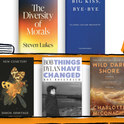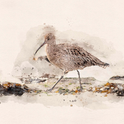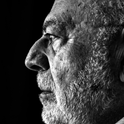On its release in America, Inside Out had the biggest opening weekend for any original film in box office history, sailing easily past Avatar’s $77m to an incredible $91m. It’s already Pixar’s eighth consecutive film to have taken over $500m worldwide, and we’ve only just had the opening weekend here in the UK, where it took £7.35m. If some were beginning to worry that the studio had gone the way of Disney, following five years of prequels, sequels and the critically mixed reception to their fairy tale, Brave, this new film has proven that Pixar is still capable of the funny, surprising and layered storytelling that made its name. But the secret ingredient of this film’s success? Sadness.
Inside Out follows 11-year-old Riley and the five emotions –a joy, fear, anger, disgust and sadness – that live in the control room of her head. When Riley’s family moves away from her childhood home in Minnesota to San Francisco, she loses sight of the core memories that tell her who she is, prompting Joy and Sadness to go on a journey deep into her mind to get them back. At first, the topography of the place grates: having to catch the Train of Thought home because Honesty Island has crumbled sounds like the worst allegory since Pilgrim’s Progress, if you think about it too hard. But as Ed Catmull, Pixar’s co-founder and president, wrote in his book Creativity Inc., "If you give a good idea to a mediocre team, they will screw it up. If you give a mediocre idea to a brilliant team, they will either fix it or throw it away and come up with something better," and in the hands of Pixar’s story artists, the landscape of Riley’s mind becomes a source of novelty and humour ("There’s inductive reasoning, there’s déjà vu, there’s language processing, there’s déjà vu, there’s critical thinking, there’s déjà vu…").
It’s one of Pixar’s funniest films, the jokes coming thick and fast throughout the film in dialogue and the visuals, and you need to watch it at least twice to catch them all. Perhaps my favourite gag was watching the maintenance workers hoover up long-term memories like phone numbers ("We don’t need these! They’re in her phone"), leaving only the names of a couple of US presidents and the ditty to a chewing gum advert.
This is also a story with serious themes at its heart, which hark back to Pixar’s very first feature film, Toy Story. Both films are about growing up and moving house, which are difficult experiences for any young person. Andy’s fear and distress is played out by the toys, the whole story enacting the kind of imaginary play we might expect to see in a child’s psychological evaluation, with Woody and Buzz vying as male role models (the implication being that the family is downsizing following a divorce). When Inside Out treats the same topic, the adventure is the emotional journey itself, and we are constantly reminded of the real world implications.
Inside Out, review: What Pixar can teach us about wellbeing
This new animated feature film will make you laugh, cry and above all think
July 30, 2015

The comedian Lewis Black, centre, provides the voice of Anger in Pixar's Inside Out ©Dan Steinberg/Invision/AP, File











